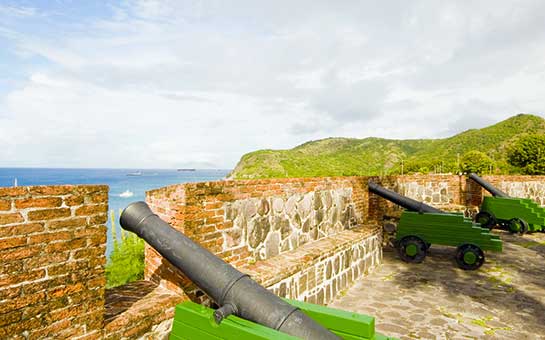Sint Eustatius is a Caribbean island, and it is a special municipality of the Netherlands. Its capital is Oranjestad. The island is known by the Dutch name of Saint Eustace, who was a legendary Christian martyr and is highly revered in these parts.
The location of the island is unique, as it is placed between British, French, Dutch, and Spanish territories. It was once a free port whose prosperity in the region depended on the ample trade and commerce of all the neighboring countries and islands who conducted business here.
Jews once formed a formidable section of the population here. The region has a very cosmopolitan air, and the many historical sites of the island—along with its beaches—make it a wonderful destination for a vacation. You should make sure to purchase travel medical insurance before your trip as a safeguard against any unexpected illnesses, injuries, or accidents that might occur.
Sint Eustatius Travel Medical Insurance for International Travelers – FAQs
With a medical insurance plan, chances of sudden additional medical expenses in case you are sick or injured get much slimmer.
Do I need travel medical insurance for Sint Eustatius?
You do not have to compulsorily buy medical insurance before arriving at Sint Eustatius. Nevertheless, having it will result in a tension-free visit.
Why buy travel medical insurance for Sint Eustatius?
If you fall sick in Sint Eustatius due to a virus or fish poisoning, or if you are injured in some way while trekking, the additional cost of medical care can be covered if you have Sint Eustatius travel medical insurance.
It can cover the cost of treatment as well as the cost of evacuation if you have to be shifted back to the mainland. Make sure these terms are included in the insurance plan.
Things to Do for Travelers in Sint Eustatius
You can enjoy quite a few activities on the Caribbean island of Sint Eustatius.
- Visit the Crater at The Quill: It is a rare opportunity to be able to explore the inside of a crater, but you can do that at the volcano of The Quill, which has a height of 2,000 feet (about 610 meters). The area around it comes under the Boven National Park. It has some spectacular hiking trails, and you can enjoy birdwatching in the woodlands.
- Attend the annual carnival: If you plan your trip accordingly, you can enjoy the spectacular carnival which takes place in the last week of July. It is a great revelry where people come together to dance and enjoy music, food, and drinks. The Carnival was first started in 1964, and since then, it has become an integral part of the island’s culture.
- Touring Fort Oranje: Fort Oranje was built in 1625 by the French, and it is a major historical landmark in the region. The ruins are still intact, and several cannons are still preserved. Some other important landmarks here are the Fort Amsterdam and the sunken Dutch walls. You can explore the latter only by underwater diving.
- Snorkeling in the pristine waters: The sea around Sint Eustatius is calm and beautiful and is home to some spectacular marine life. You can see them up close on a snorkeling expedition. There are plenty of reefs, shipwreck sites, and dive walls to observe and explore. After snorkeling, you can relax on the sandy beaches, and some areas of the beach even have unique black and tan sand.
- Go for a Hike: The island has many splendid hiking trails, with the Mazinga trail being one of them. The hikes will take you through beautiful meadows and rare orchids. There are butterflies, exotic species, iguanas, and land crabs waiting to greet you along the way. Photographers love to come here to shoot exotic species of birds and animals.
Travel Risks for International Travelers in Sint Eustatius
Even though Sint Eustatius is fairly safe, here are some things to watch out for.
- Zika virus: The Zika virus can be a real concern, so be very careful while traveling. This is especially harmful for pregnant women as it can affect the unborn child. Be sure to carry mosquito repellent and wear covered clothing as much as possible while you are outdoors.
- Dengue: Dengue is quite prevalent in Sint Eustatius, especially after the monsoons. The mosquito-breeding season also brings on bouts of malaria. Use mosquito nets at night and mosquito repellents when you are outdoors.
- Hurricanes: Sint Eustatius is often bombarded by hurricanes and cyclones, like any other island in the Caribbean. The worst of them come between June and November. However, smaller cyclones are frequent during other times of the year, as well, and fallen trees can create unfortunate roadblocks.
- Ciguatera Fish poisoning: This is a very common ailment reported by the tourists in the Caribbean. This mostly happens by eating fish that are contaminated by ciguatoxins and can cause nausea and diarrhea in extreme cases. Try not to eat raw seafood and always have seafood from registered restaurants rather than from roadside shacks.
- Hiking accidents: While the area around the trails is safe and frequented by tourists, some areas are tricky and those not used to the terrain could suffer from a fall. Try to stick to the route your guide tells you and avoid exploring rocky terrains or caves without a guide.
Before You Travel to Sint Eustatius - Do This
- Make sure you have taken vaccines for Zika virus and dengue. You should also carry a mosquito repellent with you.
- Invest in good hiking boots so that you have a proper grip while you are trekking or exploring caves.
- Stay updated regarding weather forecasts, and avoid going out to the sea if there are warnings for hurricanes or cyclones.
- Make sure you hire cars from registered rentals only, or else you might find yourself with unlicensed drivers who drive around in poorly maintained cars.
